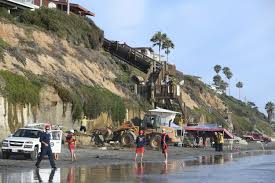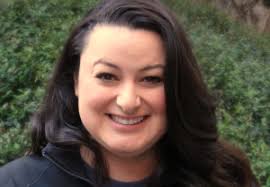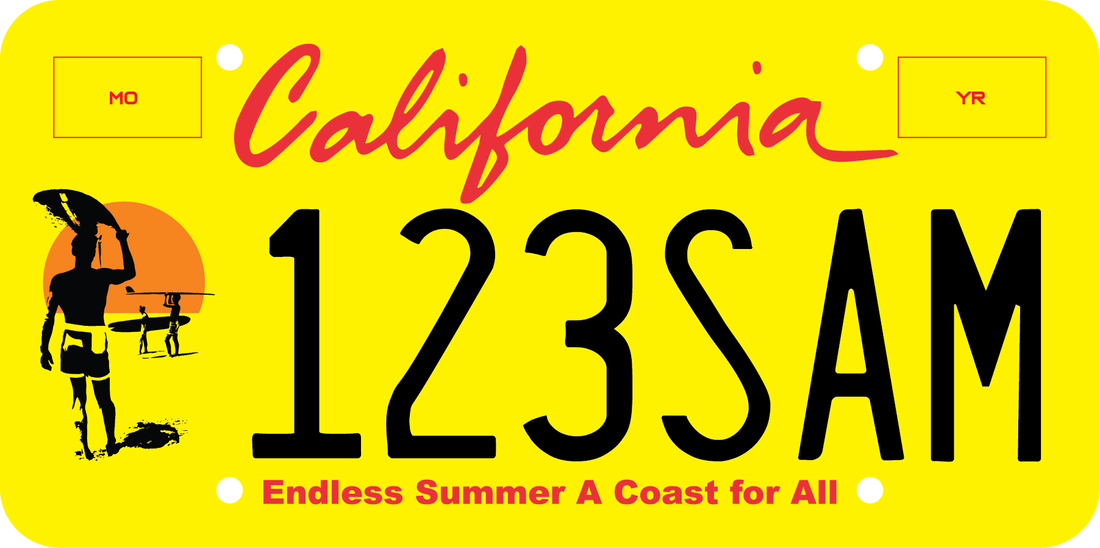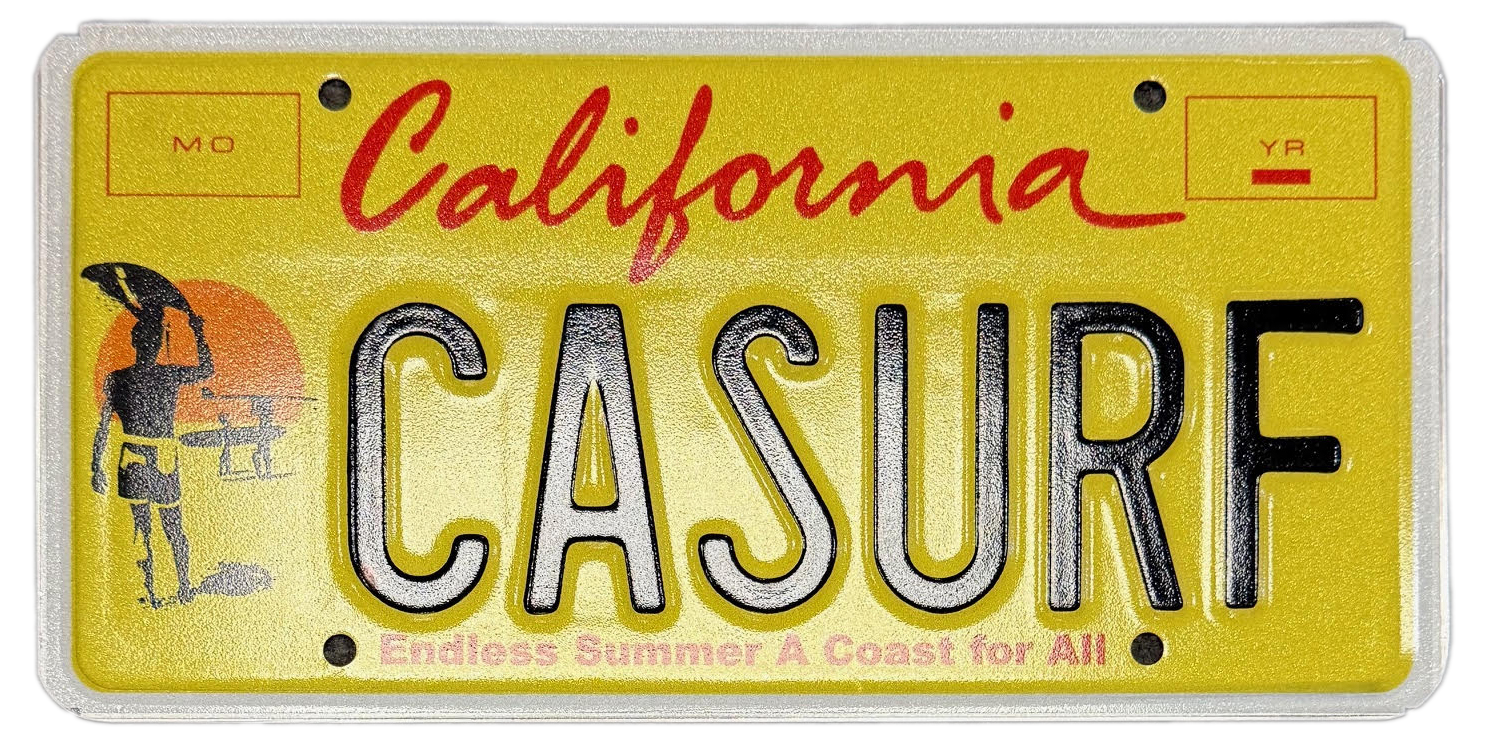|
Join the Coastal Conservancy March 17 from 12:00-1:00 for a webinar about funding opportunities from the 2024 Climate Bond (Prop 4). Conservancy staff will provide an overview of our Climate Bond funding, our priorities, and how to apply for Conservancy grants. There will also be time for Q & A. A recording of the webinar will be posted on our website subsequently.
The webinar will be held via Microsoft Teams. Join the meeting at 12:00 on 3/17 Meeting ID: 246 363 206 375 Passcode: KM3VW2zo
0 Comments
For the first time, the U.S. Army Corps of Engineers will study impacts of sea level rise on the entire region with focus on economically disadvantaged communities, vulnerable infrastructure, and nature-based strategies. The State Coastal Conservancy, Save The Bay, the Bay Conservation and Development Commission, the Bay Area Council, the San Francisco Bay Joint Venture, the Bay Planning Coalition, the Bay Area Regional Collaborative (BARC), San Mateo County Flood and Sea Level Rise Resiliency District (also known as OneShoreline), and the California Natural Resources Agency announce that the Thomas R. Carper Water Resources Development Act of 2024 (WRDA), signed today by President Biden, now includes a section instructing the U.S. Army Corps of Engineers (USACE) to conduct a study of measures to adapt to rising sea levels in the San Francisco Bay Area. The study, which is anticipated to begin in 2026, assuming funding, builds on and expands USACE’s existing authority to address the impacts and adaptation to sea level rise and climate change in the 9-county Bay Area’s ocean and bay shorelines. In addition to investigating measures to adapt to rising sea levels, the USACE study will consider the needs of economically disadvantaged communities and the existing vulnerable infrastructure of these areas, and the use of natural features and beneficial use of dredged sediment in the solutions. WRDA also directs USACE to look at the effects of proposed flood or shoreline protection, coastal storm risk reduction, environmental infrastructure and other measures on the local economy, recreation, aquatic ecosystem restoration, public infrastructure protection, and stormwater runoff capacity, as well as the erosion of beaches and coasts. “The San Francisco Bay Area is no stranger to the harmful effects of climate change, including extreme heat, prolonged droughts, and rising sea levels. Thanks to the Thomas R. Carper Water Resources Development Act of 2024 (WRDA), which I supported and voted in favor of, the U.S. Army Corps of Engineers will be able to partner with local agencies to study how to mitigate sea level rise and curb its effects on nearby communities. I remain committed to advancing efforts that improve resiliency, expand our water supply, and protect our environment,” said Rep. Zoe Lofgren (CA-18). “Bay Area leaders have worked hard to understand the impacts of sea level rise to this region,” said California Natural Resources Secretary Wade Crowfoot. “We know that climate change has worsened flooding and storm surge risks, with real threats to local communities. Now, thanks to this federal action, experts at the Army Corps of Engineering will help us better understand these risks and how we can best prepare and protect local residents. This is a big step forward that will help the Bay Area continue to thrive into the future.” Regional funding through Measure AA, State of California funding through the 2024 Climate Bond, and stakeholder contributions will leverage federal funding through USACE for the regional study and future projects. The San Francisco Bay Area stands to be one of the hardest hit regions in the nation from rising sea level, with over 8 million residents, 9 counties, 101 cities, and vital infrastructure, communities, ecosystems, and businesses—all clustered around a single bay. The impacts to communities along San Francisco’s 400-mile shoreline are expected to land disproportionately on socially vulnerable populations, which are the most at risk and least able to recover from flooding. With the projected sea level rise under state guidance of +0.8 feet by 2050, the Bay Area must prepare now to effectively manage the risks to human health and safety and the estimated hundreds of billions of dollars in losses to property and infrastructure. Specific assets at near-term risk include airports, ports, wastewater treatment plants, major highways and roadways, public transit and thousands of homes in low and moderate-income communities. “The inclusion of this language in WRDA really lets the Army Corps think on the landscape scale about sea level rise resilience for the region and opens the doors for flood and conservation agencies working in the Bay to partner with USACE across a number of projects.” said Amy Hutzel, Executive Officer of the State Coastal Conservancy. “The Corps brings the expertise and resources needed to tackle some of the region’s largest and most challenging restoration and flood protection projects. We see them as an essential long-term partner to meeting our resilience goals and I’m excited to see the project opportunities this study will lead to.” “The Water Resources Development Act recently signed into law by President Biden allows the U.S. Army Corps of Engineers to conduct a comprehensive sea level rise analysis for the entire Bay Area shoreline, a critical step to defending the region’s residents and innovation economy for the next century and beyond.” said Jim Wunderman, President & CEO of the Bay Area Council. “Special thanks to Congressman Khanna, Congressman Garamendi, Congressman Huffman, Congresswoman Lofgren, and Congressman Mullin for delivering this win for the entire region.” “San Francisco Bay is home to some of the most vibrant and vital wildlife habitat on the West Coast, all within a dense urban population. This study will help us better understand how habitat restoration and nature-based solutions can increase resilience to sea level rise for people and nature.” said Rebecca Schwartz Lesberg, Chair of the San Francisco Bay Joint Venture’s Management Board. “Sea level rise flooding is a regional challenge because floodwaters don’t stop at city borders,” said David Lewis, Executive Director of Save The Bay. “The Army Corps’ new study will identify regional opportunities to invest in impactful nature-based resilience projects like additional tidal marsh restoration. Building these projects now is critical to ensuring a healthy Bay shoreline that protects our communities from rising tides.” “I am ecstatic that the Congress and President Biden are supporting a federal study on the impacts of rising sea levels on the San Francisco Bay,” said Larry Goldzband, Executive Director of the San Francisco Bay Conservation and Development Commission. “Protecting our vulnerable communities and natural habitat in the Bay from rising sea levels is going to cost an estimated $110 billion by 2050. We cannot achieve that without federal partnership.” “This study will build upon existing science, prioritizing the Bay’s economically disadvantaged and climate-vulnerable communities to identify where the impacts of sea level rise will hit the hardest. We are excited to collaborate with the Army Corps to protect these areas while maximizing the use of nature based solutions to support the bay’s wildlife habitats.” said Allison Brooks, Executive Director, Bay Area Regional Collaborative (BARC). “The task of planning and building long-term climate resilience along the Bay shoreline will largely fall to local governments, and having the federal government as a partner through that process will be extremely helpful. We look forward to working with USACE and the other eight counties along the Bay to align protection to the inter-related threats of sea level rise and extreme storms.” said Len Materman, Chief Executive Officer, San Mateo County Flood and Sea Level Rise Resiliency District.
Since 2013, the Conservancy has awarded over $18.2 million in 296 separate Explore the Coast grants and brought over 185,000 people on field trips to the coast (updated October 2022). ETC grants fund a wide range of programs that bring people to the coast or to the shores of San Francisco Bay. At least 70% of participants served by the ETC grant must be from an ETC Priority Community. In addition to meeting this requirement, projects must also meet the following program priorities:
Examples of ETC Grantees: The Amah Mutsun Land Trust’s Summer Camp provides Native American youth meaningful and fun experiences to enjoy their coastal ancestral territory on the San Mateo and Santa Cruz coast while learning about coastal conservation and traditional ecological knowledge. Participants experience hands-on cultural learning and coastal, recreational activities that promote appreciation and connection their cultural identities. Brown Girl Surf’s Surf Sister Program offers surfing lessons, history, and ocean education for women and girls who identify as Black, Indigenous, or people of color primarily from Alameda and other Bay Area Counties. The program builds a welcoming community of “surf sisters” who support each other to surf and safely enjoy the ocean. In San Diego, Outdoor Outreach’s Coastal Adventure Club Program creates coastal outings for disadvantaged youth to go kayaking, paddle boarding, surfing, biking, hiking, and tide-pooling. This program also offers a pathway to job and leadership opportunities where participants can go on to become instructors and peer mentors for other youth in the program. Environmental Traveling Companions offers life-changing sea kayaking, whitewater rafting, and cross-country skiing, and youth leadership adventures to more than 100,000 people with special needs, including people with visual or mobility impairments, developmental disabilities, cancer and other life-threatening illness, and youth from economically disadvantaged backgrounds. Environmental Traveling Companions has received Explore the Coast grants to facilitate sea kayaking adventures in Richardson and Tomales Bay in the San Francisco Bay Area.
For any questions about the Explore the Coast grant program, please email [email protected]. Programs that teach Californian’s to value the state’s coastal resources or programs that combine education with beach maintenance and habitat restoration projects should also consider applying for a Coastal Commission Whale Tail Grants. For almost a century, the automobile has been much more than a mere mode of transportation, but rather an extension of its owner's personality with its style and panache. The auto makers sought to capitalize on America's thirst for style and power in providing sleek and faster cars which pandered to the public's desire to have their car reflect their own self image. Ever changing designs, brighter colors and engine size contributed to the symbolic nature of the automobile for its owner. As an extension of the goal of making your car an extension of your personality or self-image is the specialty license plate. Usually connected to a charity or state agency, the specialty license plate provides the quintessential "win win" dynamic in that the vehicle owner can both help a legitimately good cause and own a license plate make a social statement to those who see it, or maybe just look cool with its colors and design. In California, a new specialty plate has been approved which boldly touches all of those bases. It is the Endless Summer specialty license plate, which incorporates the theme from Bruce Brown's iconic Endless Summer movie from the 1960's. The exquisite design of the plate, with its bright yellow background and setting sun, evokes imagery of California's pristine beaches, beautiful sunny days and sport of surfing and embraces the California state of mind. Because funds from the sale of this specialty license plate help fund California's Coastal Conservancy, which promotes and protects the public's access to California's beaches, anyone who purchases the plate not only gets to display the beautiful and radiant plate on their car, but also promotes the many goals of that wonderful state agency. The legacy of Endless Summer is that it is more than a movie of youth, oceans and the pursuit of the perfect wave. It is symbolic of an optimistic state of mind reflecting sunny days, summer breezes and beautiful vistas. You can help preserve California's coast and project a sunny and optimistic statement for your car or motorcycle. For more information as to how you can register for the presale, click here. The proposed Endless Summer license plate has been awaiting final visibility testing by CHP for over 3 months.
California Code of Regulations, 13 CACode of Regs, 160.04, requires: (4) The design must meet the following standards after testing by the Department of California Highway Patrol (CHP): (A) The registration number must be clear and legible to a person with 20/20 vision in daylight from a distance of 75 feet, and in darkness with low-beam headlamps from 75 feet; and (B) The registration number must be able to be accurately perceived by Automated License Plate Reader technology in use in California from a distance of 35 feet at daytime, dusk and nighttime. Endless Summer has now surpassed the University of Florida as the top selling specialty license plate in Florida, notwithstanding generating slightly less revenue this year compared to 2019, due to the Covid-19 pandemic. Showing that specialty license plates continue to generate revenue for worthy causes, despite the pandemic - raising over $32 million in 2020.
Miami Heat and Tampa Bay Bucs both increased their sales and revenue in 2020, the only two specialty plates to do so in the Top 10. So far in the 2021 Florida State Legislative Session, 7 new specialty plates have been proposed and bills have been filed for the following: Explore our State Parks - Rep Allison Tant (D-Leon County) / Senator Dennis Baxley R-Lady Lake Inter Miami CF - Senator Manny Diaz (R-Hialeah Gardens) Toastmasters - Senator Linda Stewart (D-Orlando) Gopher Tortoise - Senator Linda Stewart (D-Orlando) Orlando United - Senator Linda Stewart (D-Orlando) Protect Wild Dolphins Alliance - Rep Jim Mooney (R-Florida Keys) Honor Flight - Rep Brett Thomas Gage (R-Sumter County) The state is also in the process of completing presale voucher requirements for 32 new plates, which commenced in October, 2019.  Republican Sen. Pat Bates Republican Sen. Pat Bates Surfing advocates and the California Coastal Commission rained ire this week on a bill that would allow San Diego and Orange county homeowners to build seawalls by right, sidestepping commission oversight. Seawalls are highly controversial in California, viewed as a property defense against sea-level rise and the crumbling of coastal cliffs. At the same time, seawalls prevent the natural replenishment of beach sand from cliff faces and land runoff. Republican Sen. Pat Bates, who represents portions of San Diego and Orange counties, brought SB 1090 before the Senate Natural Resources and Water Committee allowing testimony from pre-selected speakers. The father of an Encinitas family that lost three members when a cliff collapsed on top of their weekend picnic last year gave emotional testimony on behalf of the bill. “There is no plan for sand replenishment or any other bluff changes to increase safety on this very popular stretch of beach where my accident occurred,” said J. Patrick Davis, a pediatric dentist. Seawalls, or “hard armoring” as Surfrider Foundation’s scientist Jennifer Savage called the structures, do not make beaches safer, she said. “They destroy the beach by speeding-up erosion,” Savage said.  Encinitas cliff collapse Encinitas cliff collapse The Coastal Commission representative argued the Encinitas incident was a tragic accident, not due to a lack of action by the commission to approve or deny a seawall in the area. “The bill is designed to make it faster, easier and cheaper to build seawalls primarily to protect private residential development,” Sarah Christie, the commission’s legislative director, testified. “For every seawall that is built, the public loses a beach.” There was no committee vote, however. Sen. Henry Stern, the committee chair, and Bates agreed ahead of time to hear the bill without the vote, and testimony was heard on May 26, 2020. said Josh Kirmsse, Stern’s communications director. The Committee Analysis states that for Orange and San Diego Counties, this bill would effectively authorize by-right construction of sea walls/other hard shoreline structures and only allow the commission or a local government to deny an application for a shoreline protective device only if they determine that the construction of a shoreline protective device would constitute a substantial threat to the public health or safety. It also seeks to prohibit a state agency or local government to adopt an ordinance, regulation, policy or rule that is inconsistent with these requirements. Supporters of the bill include California Apartment Association, California Association of Realtors, Newport Beach Association of Realtors, North San Diego County Association of Realtors, Oceanside Chamber of Commerce, Orange County Realtors, County of San Diego, and ‘four individuals’.  Opposers to the bill included Azul, Azul was founded in 2011 by Marce Gutierrez-Graudins, to bring Latinxs perspectives and participation to ocean conservation, and are legally organized under the Trust for Conservation Innovation. After experiencing how mainstream ocean conservation efforts and campaigns were leaving Latinxs out, Marce decided to start Azul to engage her community in protecting coastal resources and marine life. In a joint sign-on letter expressing strong opposition, Azul, among others, writes that SB 1090 “would pave the way for private property owners to effectively hasten and accelerate the loss of public beaches from the Orange County and San Diego coasts under the guise of claiming to improve public safety.” Others who registered in opposition to the bill were California Coastal Protection Network, Heal the Bay, California Coastal Commission, California Coastkeeper Alliance, California League of Conservation Voters, California Native Plant Society, Center for Biological Diversity, Clean Water Action, Defenders of Wildlife, Natural Resources Defense Council, Plastic Pollution Coalition, Seventh Generation Advisors, Sierra Club California, Surfrider Foundation, The 5 Gyres Institute, The Center for Oceanic Awareness, Research, and Education (COARE), The Honorable Betty T. Yee, California State Controller, and the Nature Conservancy. Heal the Bay is an advocacy group of activists based in Santa Monica, California. The focus is protecting coastal waters and watersheds of southern California. Senators will do more work on the legislation at the committee level. The bill analysis also states that "erosion will be exacerbated by the presence of sea walls on the seaward size of the sea wall. Public accessibility will be correspondingly compromised. Beaches need natural erosion and sediment transfer for their health. Living shorelines, soft armoring and managed retreat, if necessary, should be prioritized. How can shoreline armoring be 'designed to mitigate or protect against coastal erosion' as it is known to exacerbate that very thing?" It also comments that the bill "provides an implicit public subsidy to private landowners." Click here for the full bill text. On May 5, 2020, in its first ever virtual Board meeting, the Coastal Conservancy authorized $8.2 million in grant funding for projects to restore, protect and increase access to the California Coast and San Francisco Bay. Due to state and local Shelter-In-Place orders, members of the Conservancy’s Board, staff and the public convened via teleconference to discuss and approve 20 projects. Among the grants awarded was $1,000,000 to the National Wildlife Federation to prepare engineering designs and construction specifications for a wildlife crossing that will connect the Santa Monica Mountains to the Sierra Madre Range over US-101 and Agoura Road, west of Liberty Canyon Road in the City of Agoura Hills. The wildlife crossing’s primary beneficiary will be the mountain lion (Puma concolor) population in and around the Santa Monica Mountains. There are approximately 10 to 15 mountain lions remaining in this area, and the habitat fragmentation caused by US-101 causes inbreeding, territorial fighting, decreased genetic diversity, and declining health among the mountain lions. Scientists and wildlife managers predict the mountain lion population in the Santa Monica Mountains will be extinct in the next 50 years without a safe US-101 crossing at Liberty Canyon. The Board also approved a grant of up to $500,000 to the Mountains Recreation and Conservation Authority to prepare plans, designs, environmental review documents and a public works plan for a campground and associated amenities at the Malibu Bluffs in the City of Malibu. One of the biggest barriers for low and middle-income Californians to accessing and enjoying the coast is the lack of affordable overnight options. Nearly 60% of Californians never spend the night when they visit the coast. This project will help expand coastal camping in Southern California. When constructed, the Malibu Bluffs Campground would add 50 campsites ranging from platform tent cabins/yurts to pop-up tent campsites, nearly doubling the number of campsites in the City of Malibu, which receives 15 million visitors annually. A grant of up to $50,000 was authorized, to the Orange County Coastkeeper to prepare a business plan, evaluate design options, and prepare permit applications for the purchase and installation of ten prefabricated lower-cost bungalows at the Waterfront RV Park in Huntington Beach, Orange County.
A grant of up to $1,300,000 was authorized to go to the Redwood Coast Land Conservancy for the acquisition of the 113-acre Mill Bend property and preparation of an integrated resource management plan for the property, located at the mouth of the Gualala River in Sonoma and Mendocino counties. |
blogArchives
May 2025
Categories
All
|
Funding from this plate will be directed to programs that promote coastal access, make coastal lands welcoming to all, and increase opportunities for coastal enjoyment.







